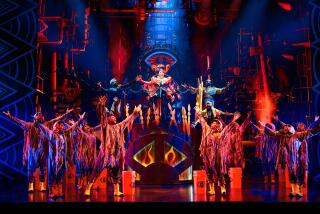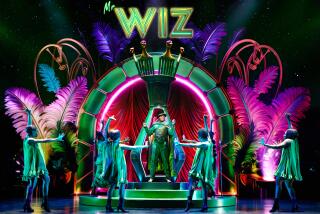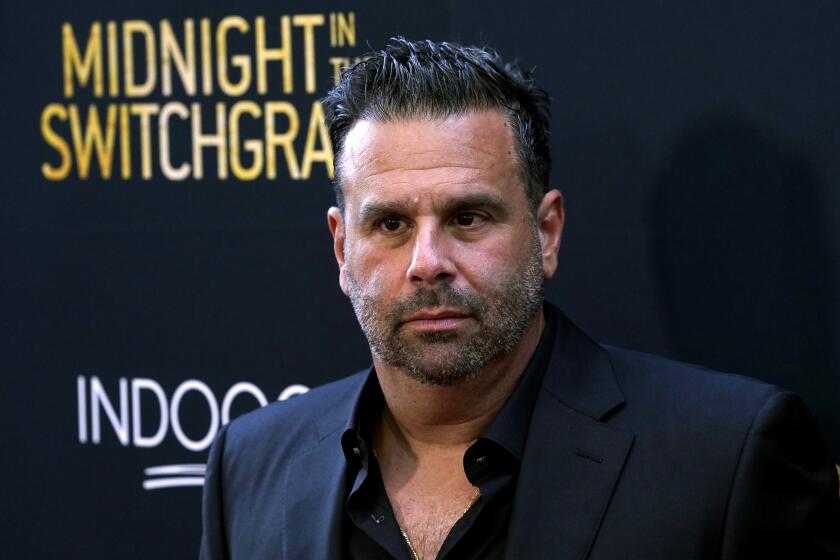How did ‘Wizard of Oz’ fare on its 1939 release?
- Share via
“The Wizard of Oz,” starring Judy Garland, Ray Bolger, Jack Haley, Bert Lahr, Margaret Hamilton and Frank Morgan, is one of the most beloved films in all of cinema. In fact, according to the Library of Congress, the musical fantasy is the most-watched picture in history.
But how did the film fare at the box office and with critics when it came out in 1939?
“‘The Wizard of Oz’ was a moneymaker for its time,” noted William Stillman, co-author of “The Wizardry of Oz: The Artistry and Magic of the 1939 M-G-M Classic,” by email. “But with the average national ticket prices at 25 cents (more than half of its audiences were juvenile patrons who paid a dime or 15 cents), it was not expected to recoup its $3 million in production and promotion costs.”
VIDEO REVIEW: ‘Oz the Great and Powerful’
Remember, film historian Scott Essman says, movies in those days were “very ephemeral.” There wasn’t any TV or DVD on which to extend their life, he points out, so “they came and they went, and that was it.”
The initial reviews for “The Wizard of Oz” were mostly positive, Stillman said, with some comparing it favorably to the first full-length animated feature, Walt Disney’s “Snow White and the Seven Dwarfs.” That 1937 release, he said, had inspired MGM to put “Oz” on a production fast track. He said critics also singled out the performances, particularly Garland’s and Lahr’s, as exceptional.
But not everyone was enchanted. Some critics thought MGM was trying to impinge on Disney’s territory, Stillman said, while those who loved L. Frank Baum’s Oz book series were not happy with the film’s modern touches, such as the Wicked Witch of the West’s sky-writing “Surrender Dorothy” above the Emerald City on her broomstick.
“The Wizard of Oz” was nominated for six Academy Awards, including best film, winning Oscars for original score for Herbert Stothart and best song for “Over the Rainbow,” composed by Harold Arlen with lyrics by E.Y. Harburg.
The film was re-released in 1949 and 1955, “by which time Garland had become an internationally recognized entertainer,” Stillman said. “The film’s all-American theme of solidarity, preservation of home and vanquishing of evil forces resonated with audiences in patriotic postwar 1949 and it recouped its initial losses and turned a profit.”
PHOTOS: Scenes from ‘Oz the Great and Powerful’
But the movie really gained iconic status when CBS aired it for the first time on Nov. 3, 1956. “It changed the whole nature of that movie,” Essman said. “It became an event to see this film.”
“Bert Lahr, who had last seen ‘Oz’ at its 1939 premiere, introduced the program, assisted by Judy’s daughter, Liza Minnelli,” Stillman said. “The original 1956 broadcast was a huge success, drawing 45 million viewers.”
The network didn’t air it again until 1959. Hosted by Red Skelton and airing at an earlier hour — the first broadcast was at 9 p.m. — it attracted even more viewers.
“A new contract between CBS and MGM was negotiated for a third airing, and subsequent showings established ‘The Wizard of Oz’ as an annual ‘special event,”’ said Stillman.
The movie aired over the decades on CBS and NBC. After Turner Entertainment bought the MGM library, the film is now shown on TBS, TNT and TCM.
Are you an aficionado of iconic Hollywood? Like us on Facebook and go to the Classic Hollywood landing page to get more Times coverage.
PHOTOS AND MORE
TIMELINE: Violence in movies
ENVELOPE: The latest awards buzz
PHOTOS: Greatest box office flops
More to Read
Only good movies
Get the Indie Focus newsletter, Mark Olsen's weekly guide to the world of cinema.
You may occasionally receive promotional content from the Los Angeles Times.









